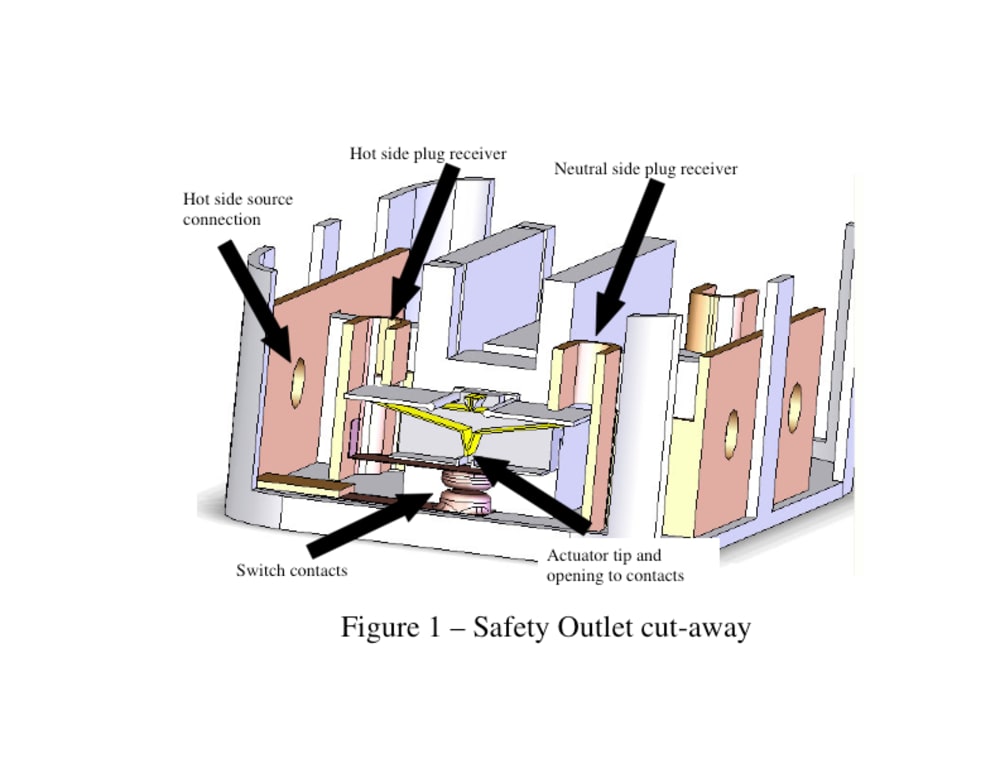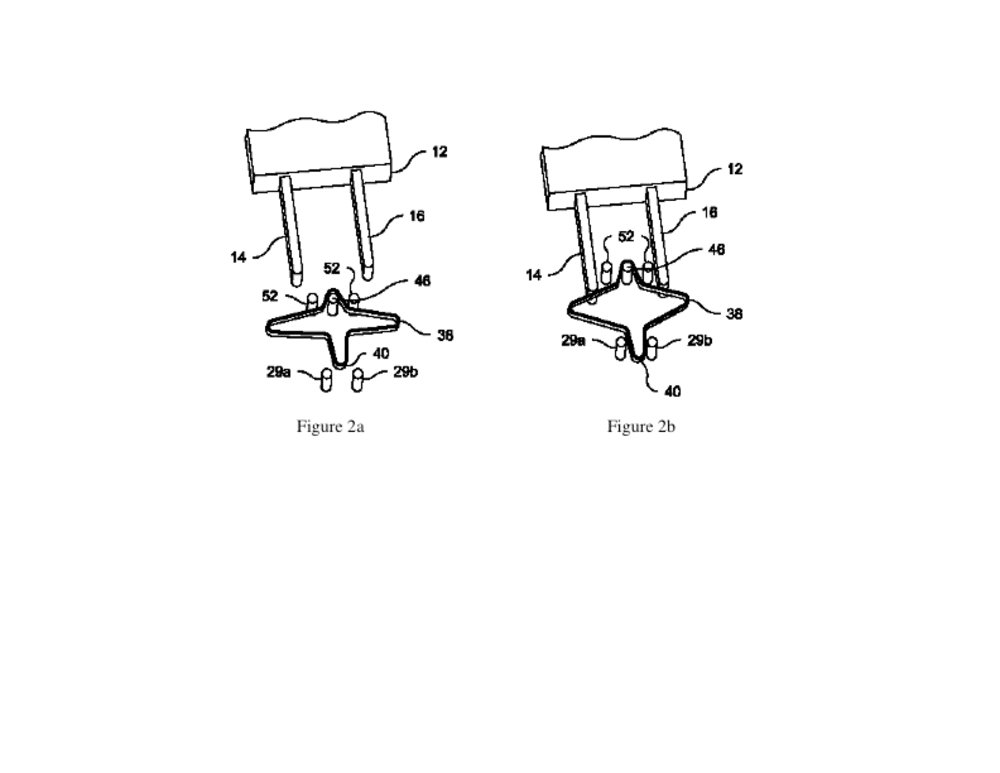This improved outlet design requires simultaneous insertion of the hot and neutral plug tangs to energize the outlet. Single items inserted into a single opening, or multiple items inserted at different times will not energize the outlet.
Typical wall electrical outlets in homes and businesses provide power to appliances plugged in via the contact of the appliance plug tangs and the outlet internal conductive tang receivers. Outlet contacts are typically connected directly to the electrical source with no internal switches. In nominal installations, two of the three outlet tang receiver locations are connected to ground/neutral and one is connected to the ‘hot’ side electrical source. There is a one in three chance an unknowing person or curious child sticking a conductive object into any outlet opening will receive an electrical shock.
The key element of this outlet is an internal, deformable, spring type actuator. When hot and neutral receivers are engaged at the same time, as with a typical plug, there is a symmetric deformation of the actuator that causes the tip to close the hot side electrical connection. If only one side of a plug pair is engaged the resulting actuator deformation prevents the connection from being made. If the first inserted item is left in the outlet and a second item engaged on the other outlet opening, the still deformed actuator remains misaligned and will not close the electrical contact. Any combination of single item insertion, then removal, or first insertion then second insertion, or any combination of removal will not energize the outlet. When all items are removed the actuator springs back to the neutral position and is again ready to accept a standard plug. No resetting is required after attempted misuse.
This design requires no different actions for use than existing outlets and works with standard plugs. The internal contacts and actuator fit within the volume and configuration of a typical outlet housing. In the simplest configuration the outlet design breaks the hot side conductor into two parts, with contacts at the break point, and adds the spring actuator. Relatively simple changes to a typical outlet body mold accommodate the new internal arrangement. Currently used manufacturing and assembly methods can still be used to fabricate this outlet.
Figure 1 is a cut-away of the outlet interior. The plug tangs would be inserted from the top, pushing down the actuator such that the tip passes through the opening and closes the hot side contacts. Figures 2 & 3 show the actuator operation in detail. Figure 2a shows the plug prior to entry and the actuator in the nominal shape. Figure 2b shows the deformed actuator tip passing between pins 29a & b, where the electrical contacts would be. Figure 3a shows the actuator just prior to a misuse insertion. Figure 3b shows the deformed actuator missing the opening between pins 29a & b. Figure 3c shows that after a separate second side insertion the actuator tip still does not pass through the opening to the contacts.
Like this entry?
-
About the Entrant
- Name:Carl Knoll
- Type of entry:individual
- Software used for this entry:Solid Works
- Patent status:patented








